Disney Live-Action Remakes Ranked: From The Little Mermaid to The Lion King
Disney keeps making them, and audiences keep seeing them. So we’re going to figure out which of the live-action remakes of animated classics are worthwhile.
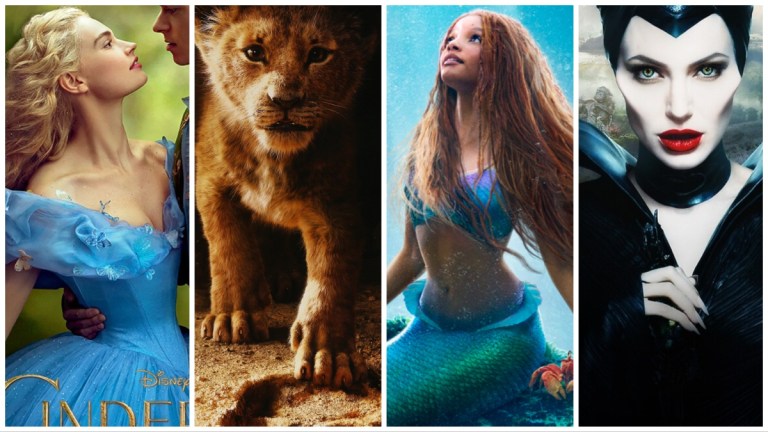
It’s kind of funny now, but there was a time (decades, really) when Walt Disney Animation Studios refused to even make a sequel to their classic works. Millennials of a certain age will of course recall the deluge of straight-to-video sequels released by the Mouse House in the 1990s and early 2000s, but those were never made by WDAS Proper, which for the whole of the 20th century almost always viewed every effort as a single work that should not be revisited.
How times change.
In the 21st century, WDAS has gotten with the program as the Walt Disney Company’s priorities have shifted from creating new characters to curating and maintaining the popularity of existing ones. It’s why we’re right now anticipating Frozen III and Zootopia 2. But that’s still demure when compared to the larger Walt Disney Pictures umbrella, which has been mining the animation vault for every last scrap of intellectual property with the intention of remaking it, occasionally scene-by-scene, in live-action. At least when it’s come to reworking the crown jewels of the Disney Renaissance of the late 1980s and early 1990s, it’s paid off handsomely: Bill Condon’s Beauty and the Beast earned $1.3 billion; Guy Ritchie’s Aladdin walked off with a cool $1.1 billion; and Jon Favreau’s The Lion King retread scored an astonishing $1.7 billion.
… But are any of these movies any good? With Rob Marshall’s splashy redo of The Little Mermaid now in theaters, we’ve taken the opportunity to revisit Disney’s past decade of making the same thing again to figure out which really were able to stand on their own, and which were just brand management.
*Editor’s Note: We are focusing only on the modern Disney remakes, which began in 2010. So while there were a handful of Disney remakes of animated films from before then, they will not be included on the list. We are also not including any sequels to the remakes.
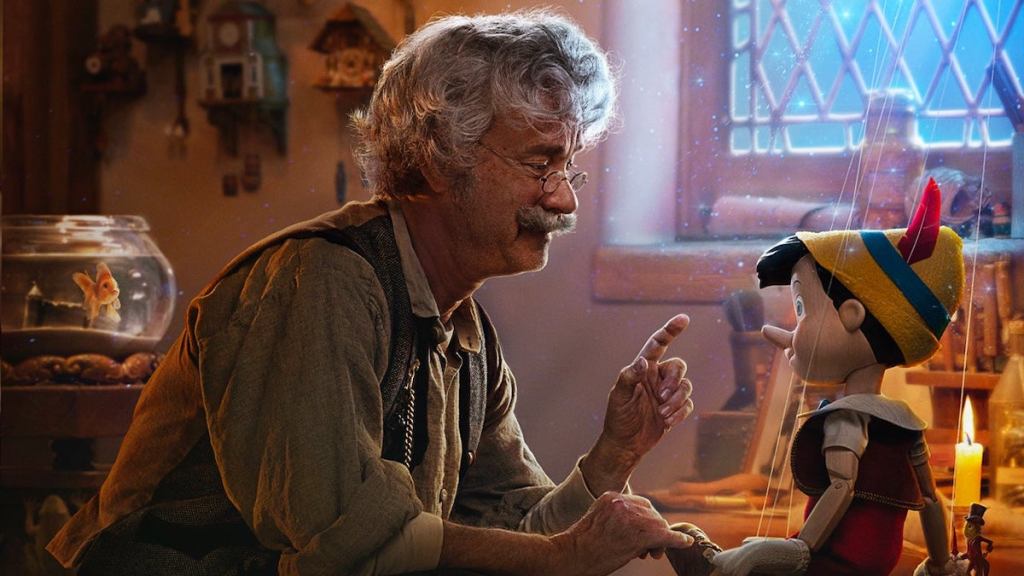
15. Pinocchio (2022)
There was a time when Robert Zemeckis working with Tom Hanks meant you could expect crowd-pleasing epics. Think Forrest Gump (1994) or Castaway (1999). Even The Polar Express (2004) wasn’t a total derailment. But their partnership on Pinocchio last year is so half-hearted, so devoid of wit or inspiration, that it’s best quality is it had the good luck to come out in the shadow of Guillermo del Toro’s stop-motion reimagining of the same story on Netflix. Which is to say, the embarrassment of Zemeckis’ fiasco didn’t even have to wait six months before being obscured to the dustbin of corporate tax write-offs.
Audiences certainly had reasons to write this Pinocchio off. An unpleasant amalgamation of flesh and blood actors on film sets (or at least in front of blue screens) and lovingly cartoonish character designs from 80 years ago, what once looked sweet and endearing on paper is now incongruent and off-putting in pixels. Why must Hanks’ Geppetto have a CGI cat, for example, other than to resemble the animated movie?
But the greatest emblem of how risk-averse these live-action remakes have become is the ending of Pinocchio itself. The film almost retcons the conclusion of the children’s story and 1940 film by having Pinocchio not become “a real boy,” but then alludes via voiceover narration he might still transform into one. Unlike del Toro’s daring reinvention of the tale, Disney’s modern take is craven. It’s desperate to please audiences who want a faithful redo of the original movie as well as those who wish for the remakes to redress the “problematic” elements of childhood classics. In effect though, it stands as a house divided, pleasing no one while being terrified of charting its own course.
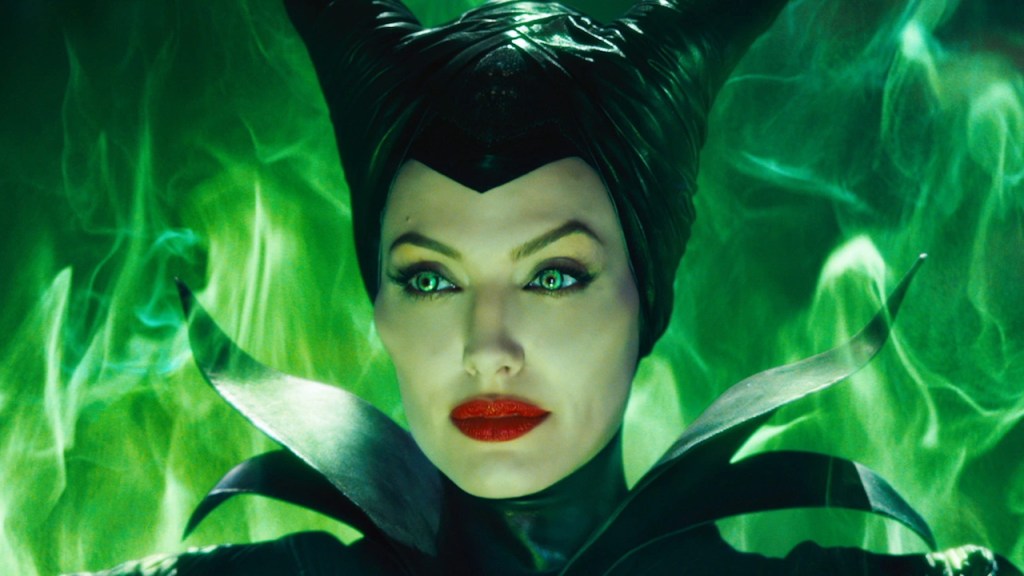
14. Maleficent (2014)
When looking at Disney’s recent catalog of remakes, a nagging question persists across most of the gamut: What is the point? Many of these films are such slavish repeats that parents are left to wonder why bother showing the new version to their children instead of the original version. In that context, the Angelina Jolie-fronted Maleficent should be a reprieve. Yes, it’s a remake, but it’s also trying to do its own thing.
Unfortunately, and as perfectly cast as Jolie is as Maleficent (and when she flashes that sinister, toothy grin, she is sublime), the screenplay by Linda Woolverton never rises to match the performance. Technically, it’s an original take on Sleeping Beauty, but only insofar as most of the characters who were “good” in the original fairytale (Princess Aurora’s father, her court) are lazily turned evil while the evil character is now largely good other than the single scene where she curses a newborn baby to essentially die on her 16th birthday.
The movie suffers from an inability to reconcile its contradictions. It both wants to turn the greatest villain in the Disney canon into a girl-boss hero and keep her attempted child-killer iconography. Also Mal is just too cool of a villainess to be reduced to leading 2010s CGI armies into battle. That she isn’t allowed to turn into a dragon probably also cost this movie a few spots in the ranking.
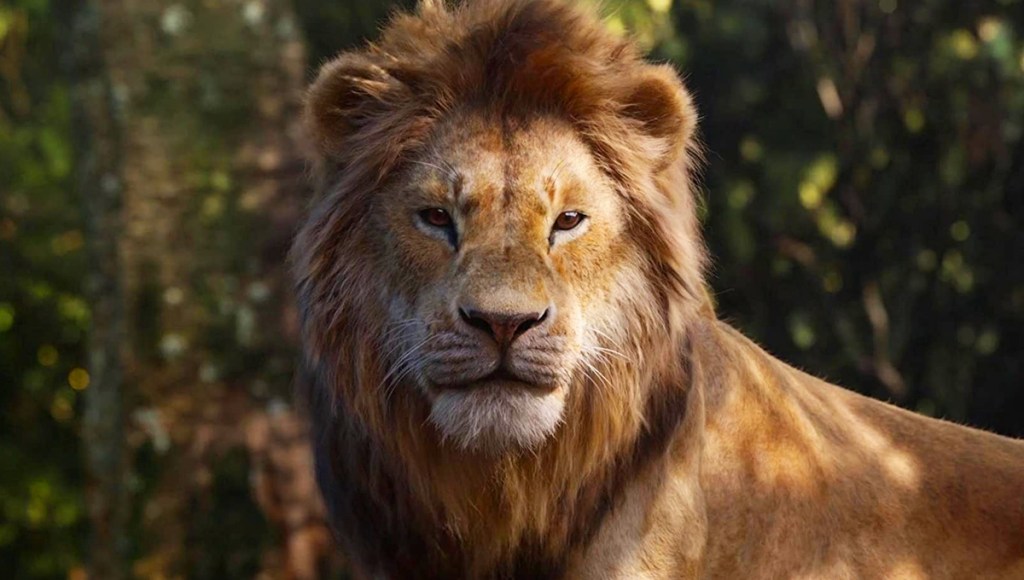
13. The Lion King (2019)
For many modern audiences, the original The Lion King of 1994 is the zenith of the Walt Disney Animation Studios library. It’s an animated musical which balances the weight of Shakespearean melodrama with the goofiness of “Hakuna Matata.” Disney is acutely aware of the classic’s legacy too. Hence rolling out the red carpet for the 2019 remake. Jon Favreau, the director of the splendid The Jungle Book reimagining and Iron Man, was brought onboard for this “live-action” take, as was an all-star cast led by no less than Beyoncé as Nala and James Earl Jones, who reprised a role he voiced nearly 30 years earlier.
Yet therein lies the movie’s biggest issues. Not since Gus Van Sant’s misguided Psycho remake in 1998 has there been such a worshipful, nearly shot-for-shot recreation of a classic. Both films also stand as examples of how difficult it is to recreate the ephemeral quality of movie magic, even if you frame scenes in exactly the same way. Favreau certainly tried, yet his “live-action” variations are just another form of animation, and this time with decidedly less soul. By utilizing photorealistic 3D CGI in lieu of gorgeous, warm, and hand-crafted drawings, Favreau exposed the cold emptiness of so many modern CGI spectacles.
The story beats are all still there, the songs (except for Scar’s magnificent “Be Prepared”) remain, but the emotions are lost on stone-faced animals whose “realistic” countenances lack the humane and heartfelt quality of hand-drawn animation that was never concerned with “realism.” Donald Glover’s Simba may be the lion king but he reigns over a barren wasteland.
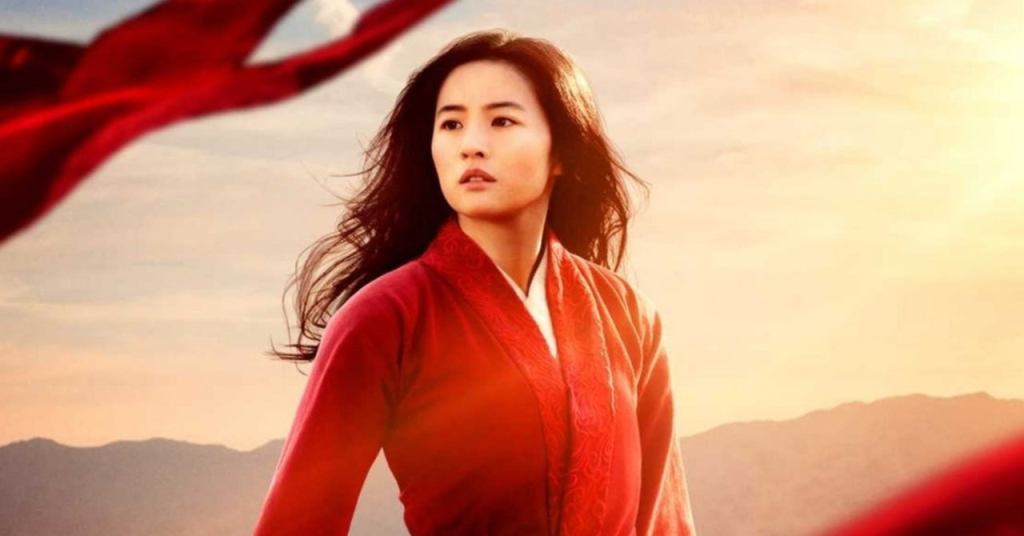
12. Mulan (2020)
Poor Mulan. As a film that was supposed to be one of the biggest hits of 2020, this reimagining of the last great Disney Renaissance picture wound up abandoned during the height of the pandemic in 2020, premiering simultaneously in theaters and with a premium surcharge on Disney+. It also was overshadowed by the various controversies it courted while being created in a way that would please the Chinese government (unlike the 1998 original).
While on paper making a more faithful recreation of the Mulan legend sounds like a splendid idea, Niki Caro and Disney’s version tastes of a westerner unconvincingly trying to follow an authentic eastern recipe. The ingredients are there, including a cast of actors with experience in Wuxia and martial arts films like Donnie Yen, Jet Li, Gong Li, and Liu Yifei, but the results come off like an affectation; a sincere but misguided attempt to honor a Chinese myth while mistakenly exoticizing ancient Chinese culture as nothing but a group of honor-bound dullards.
Disney would have much better success at paying tribute to Southeast Asian culture a year later in WDAS’ animated Raya and the Last Dragon, a movie written by actual descendants of Southeast Asian immigrants. Imagine that.
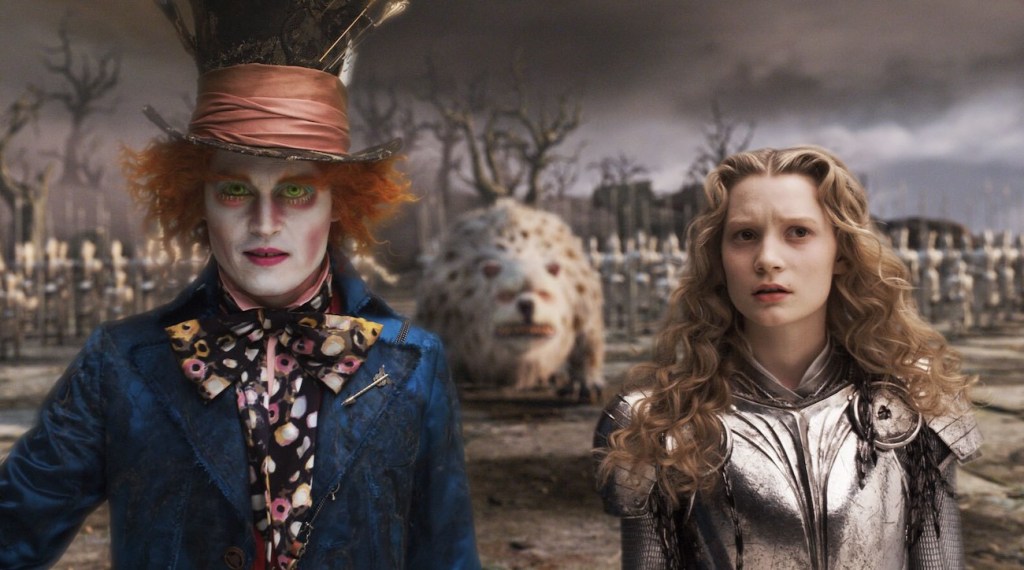
11. Alice in Wonderland (2010)
Here is the movie that started the modern Disney remake obsession. Yes, the Mouse House had tried its hand at it before with a wild reinvention of The Jungle Book in 1994 and a faithful riff on 101 Dalmatians in 1996, but those were novelties. Alice in Wonderland was the beginning of a search for a formula that could be repeated and exhausted ad infinitum.
The kinks weren’t quite ironed out in 2010 though. Marketed as much as a Tim Burton movie and a Johnny Depp vehicle during the apex of their popularity (although not before their actual output had entered decline) as it is a reworking of a childhood favorite, Alice in Wonderland stunned the industry when it earned $1 billion. This was partially due to it being the first 3D release after Avatar. Nonetheless, Alice undoubtedly captured the zeitgeist with its bleak digital landscapes, Depp’s penchant for fright wigs and funny voices, and a perfunctory Lord of the Rings-esque CGI army battle at the end.
But then the whole thing is pretty perfunctory. Burton’s cheerfully macabre color palette is on display, yet rather than being charming, it’s hideous due to wonky computer imagery, as well as the thing being in tonal opposition to what makes Lewis Carroll’s Wonderland, um, wonderful. This is an ugly movie with a script by Linda Woolverton that is the definition of safe, unremarkable, and boring.

10. Dumbo (2019)
While on the subject of Burton, here is the gothic filmmaker’s other effort in Disney’s recycling project. Ironically, it’s also another turning point in the economics of ransacking the IP closet. If Alice in Wonderland showed Disney there was gold up in them hills, Dumbo revealed that the biggest yellow deposits exist in films that twentysomethings or thirtystomethings grew up with seeing in theaters, and thus have an added dose of nostalgia for. Alice benefitted from featuring Depp during his peak fame years, but Dumbo flopping at the box office would cause the Mouse House to funnel pre-Disney Renaissance remakes to Disney+ forever after.
Still, Dumbo is the better of the Burton redos. Sure, the film lacks the heart and joy of the 1941 original, but it at least features a scrap of Burton’s affection for outcasts and wounded souls. And little looks more wounded or cast aside than a sad elephant in clown makeup. The movie also is curiously spiteful against the hand that feeds it, with the third act turning into Burton’s satire of Disney wherein Michael Keaton’s not-Walt is a cruel, ruthless capitalist who gets his comeuppance when Dumbo leads an animal revolt that destroys his theme park. It’s not great, but there are a few ideas at play that at least suggest a creative ambition which is totally absent in the above films.
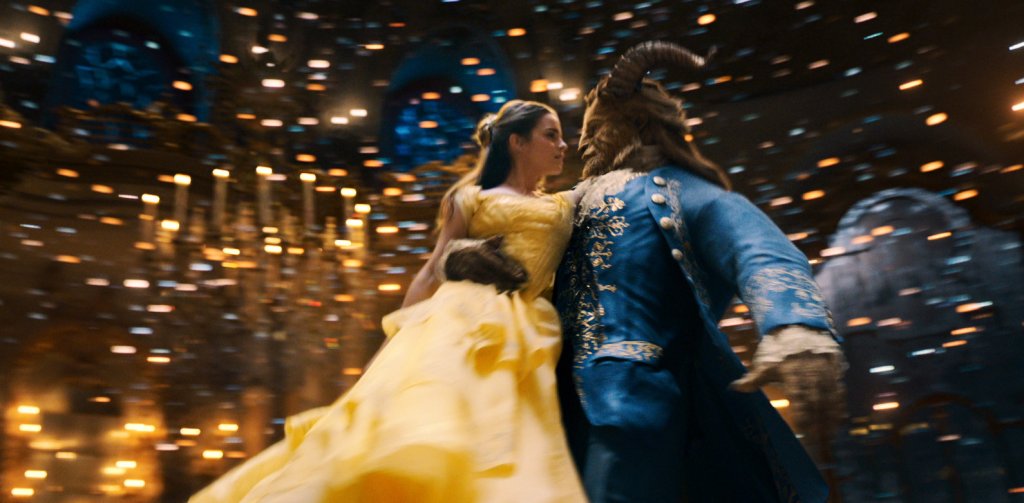
9. Beauty and the Beast (2017)
Generally well-received six years ago, the flaws that were pervasive throughout Bill Condon’s Beauty and the Beast have become more apparent after Disney repeated the formula in The Lion King. Beauty nonetheless fairs better because Condon has a decent handle on what the tone is, and one senses he’d love to drift it toward an actual attempt of doing his own 1960s-like Hollywood musical, which his blocking often evokes. Alas, there is too much nostalgia to be mined. So we’re left with a worse version of the 1991 classic that inspired this picture, complete with unconvincing attempts to “correct” all the problematic bits from the classic. Unfortunately, these updates are delivered with all the sincerity and conviction of a PR email blast.
Token lip-service is paid to Belle (Emma Watson) being an inventor like her father, and Beast (Dan Stevens) is given a sob story childhood meant to make Belle and audiences fall in love better with the furry lug, yet the romance between Watson and Stevens’ gruesome CGI mug has less chemistry than those pencil sketches did in ’91, and the romance is further rewritten in a way that cannot be mistaken as either a “Stockholm Syndrome” fantasy (as the common criticism of the tale goes) or particularly romantic. Now the Beast negs Belle into loving him like he’s on a 2000s sitcom.
Also, cards on the table, even with autotune Watson’s weak vocals cannot carry those songs.
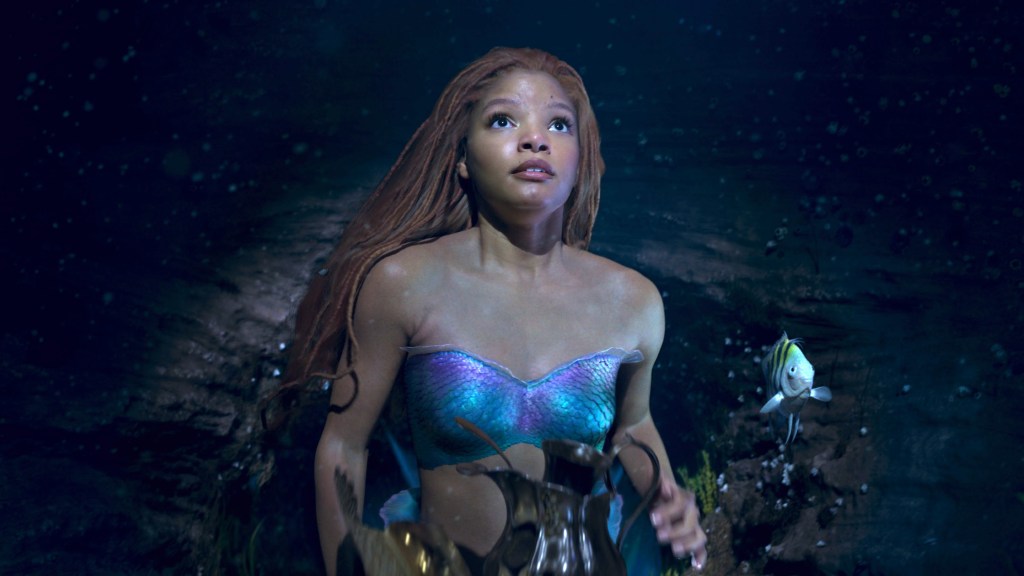
8. The Little Mermaid (2023)
Midway through Rob Marshall’s long-in-the-making The Little Mermaid repeat, Halle Bailey’s copper-haired Ariel sings the achingly beautiful “Part of Your World” to her fish friend Flounder and the surface above. It contains everything good and bad about the film. In the plus column is Bailey’s irresistibly sweet and enchanting performance which drowns out racist online whining. She’s terrific in the role, and then there is that powerhouse voice! Yet even how her siren song is used here belies the problems of the movie. Marshall directs the scene as a power ballad showstopper instead of a genuine “I Want” plea filled with longing and despair. He’s going through the motions while missing the actual emotions. He also films the sequence with hideous and “realistic” CGI, which robs the character of Flounder or (worse) the crab Sebastian of any personality or visual charm.
This is another ugly looking movie (at least when it’s underwater) that probably would’ve drowned altogether if not for Bailey’s star-making turn and the overall magnificence of Howard Ashman and Alan Menken’s original collection of songs from 1989. Strangely, the movie works better when it’s on land, where the actors are playing against sets and each other instead of CGI monstrosities. But when your film is about the supposed joy of living “Under the Sea,” it’s a problem if it’s not better down where it’s wetter.
Also as admirable (if surely market-tested) as it is to make The Little Mermaid an inclusive film, the way the picture imagines a fairytale lifestyle in the 19th century Caribbean—where the English-sounding Prince Eric (Jonah Hauer-King) is introduced as trading sugar cane when he isn’t dancing with impoverished Black subjects on his island—smacks a bit of the historical revisionism in The Song of the South. Just saying…
7. Aladdin (2019)
At this point, the critiques that can be applied to most Disney remakes, especially of the Renaissance vintage, are familiar: Guy Ritchie’s Aladdin is another garishly gray film that relies on a muted color palette to obscure questionable CGI—as well as the vivid charm of the source film. It features a storytelling structure too beholden to the original while also ignoring that what works in animation doesn’t always work in live-action (so another dead-eyed CGI animal by way of poor Iago).
And yet, there are a few things that make Aladdin easily the most enjoyable of the ‘90s nostalgia trips from the Mouse. Firstly, Ritchie comes the closest of these filmmakers to making it his own, beginning with the casting of Will Smith as the Genie. The Fresh Prince is obviously no Robin Williams, but then no one else is. Thus instead of playing the big blue guy as Aladdin’s lovable uncle and very own impersonation comedian, Smith plays him as… Hitch; a wingman; Al’s buddy at the club more than a magical conscience. Further, Ritchie and a winsome MENA cast embrace Bollywood storytelling and go completely off the 1992 script for some wildly inventive dance sequences that become the movie’s sign off during the end credits.
In moments where Mena Massoud and Naomi Scott are doing backflips in the courtyard over tigers (just look above!) you glimpse at what these remakes could be if Disney wasn’t so afraid of risk.

6. Christopher Robin (2018)
The strangest thing about Marc Forster’s Christopher Robin is that I’m not sure it’s meant for children. While undoubtedly based on A.A. Milne’s beloved children’s books about Winnie the Pooh and the other animals residing in the Hundred Acre Wood, the film has more in common with Steven Spielberg’s Hook (1991) than it does classic Winnie the Pooh stories. For here we find a middle-aged and depressed Christopher Robin (Ewan McGregor) returning to his childhood stomping ground after Pooh Bear shows up in London out of the blue to recruit him in finding Tigger and the rest of the gang.
A quiet, slow, and frankly melancholic movie, Christopher Robin’s Eeyore sensibility unsurprisingly failed to find the same mass audience appeal of Beauty and the Beast or The Little Mermaid. However, it at least tries to do something new with its intellectual property and has a genuinely fluffy heart beating beneath the surface. It’s a more sensitive, contemplative family movie that will not work for the youngest ones, but it’s the first entry on this list with a tangible soul.
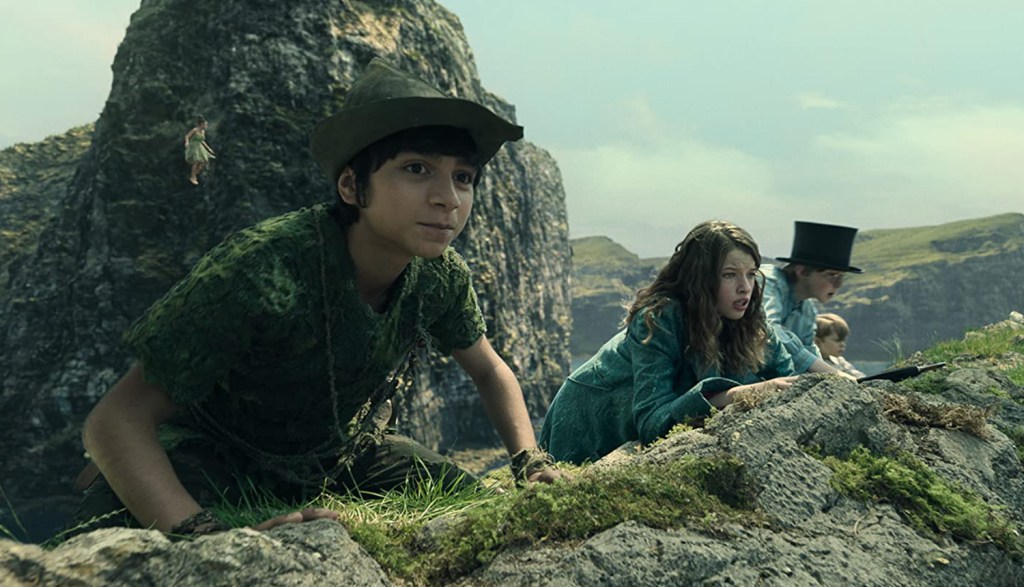
5. Peter Pan & Wendy (2023)
David Lowery is a fascinating filmmaker who has a real knack for versatility. He is able to branch from indie mood pieces like A Ghost Story to deconstructionist epics a la The Green Knight with ease, and he’s proven just as comfortable in the Disney machine too. In fact, one of the best remakes the Mouse House ever made was Pete’s Dragon (2016), which we debated including on this list. However, the original Pete’s Dragon (1977) was a mostly live-action fantasy (with the titular dragon being the only animated element), so we opted to leave it off. Even so, Lowery’s Peter Pan & Wendy is not without its charms.
A definitely revisionist take on J.M. Barrie’s original story, the version not only centers Wendy (Ever Anderson) to a greater degree than any previous film but also considers the life-altering impact of meeting Peter Pan (Alexander Molony) and then being forced to leave Neverland. Indeed, the film’s Capt. Hook (Jude Law) is a former lost boy who is spiteful because he grew up and his childhood chum didn’t. It’s an interesting interpretation, although in this case, it is overshadowed by the fact that we’ve seen the theme of Peter Pan (or his pal) growing up done with far more grandeur in Spielberg’s Hook (1991), which benefited from the budget and care that Peter Pan & Wendy’s limited Disney+ investment could never allow. The film’s gray drabness (again a Disney M.O. to hide shoddy VFX) makes Lowery’s reimagining also pale in comparison to the far more gorgeous 2003 live-action adaptation starring Jeremy Sumpter, Jason Isaacs, and Rachel Hurd-Wood.
That 2003 version is a treasure, but it flopped and was not made by Disney. So most children of today will never see it, whereas Peter Pan & Wendy will be seen by millions on Disney+. That isn’t a bad thing though for a movie as clever and compassionate as Lowery’s.
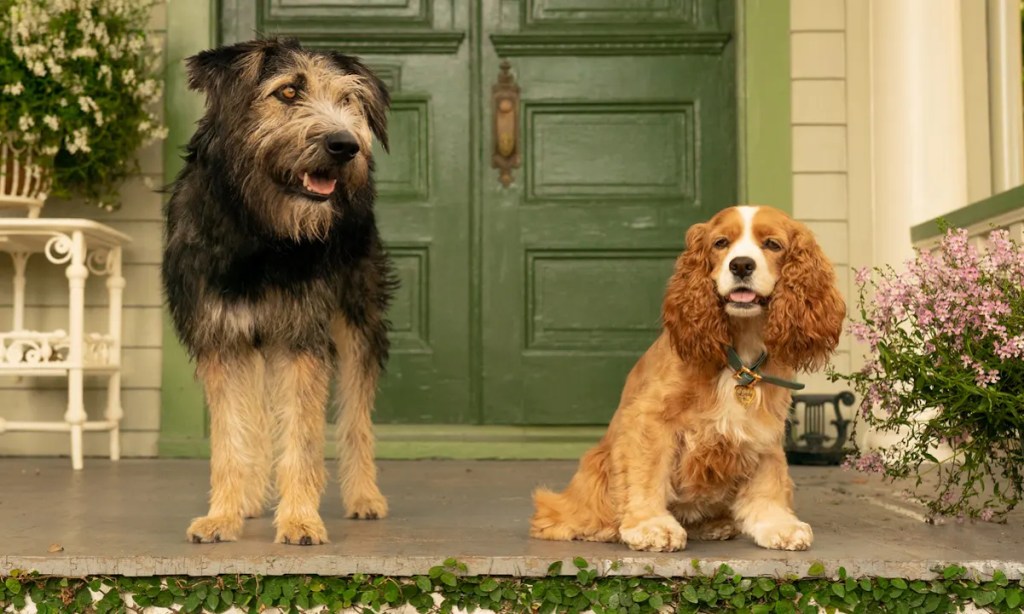
4. Lady and the Tramp (2019)
Of all the lavish and bombastic Disney remakes of 2019—Aladdin! Dumbo!! The Lion King!!!—Charlie Bean’s far more modest Lady and the Tramp went largely overlooked by anyone but families when it premiered on Disney+. But those youngest of families were fortunate to find the best of the bunch in this quiet, affectionate, and easygoing entertainment.
While suffering from the fact that “photorealistic” CGI animals will never have as much color or personality as those drawn by hand, Tessa Thompson’s cocker spaniel and Justin Theroux’s mutt are both sketched with enough exaggeration to get the job done (something Favreau should have noticed while making Lion King). What’s more appealing is that while the movie retraces all the story beats from the 1955 classic, it does so with a sweetly affectionate and unhurried pace. The film is happy to luxuriate in Walt Disney’s (idealized) memory of turn of the 20th century America, as well as the simplicity of a story about love, family, and dogs. It’s saccharine but in that endearing way mastered by older Disney movies. Think Homeward Bound (1993) as much as Lady and the Tramp.
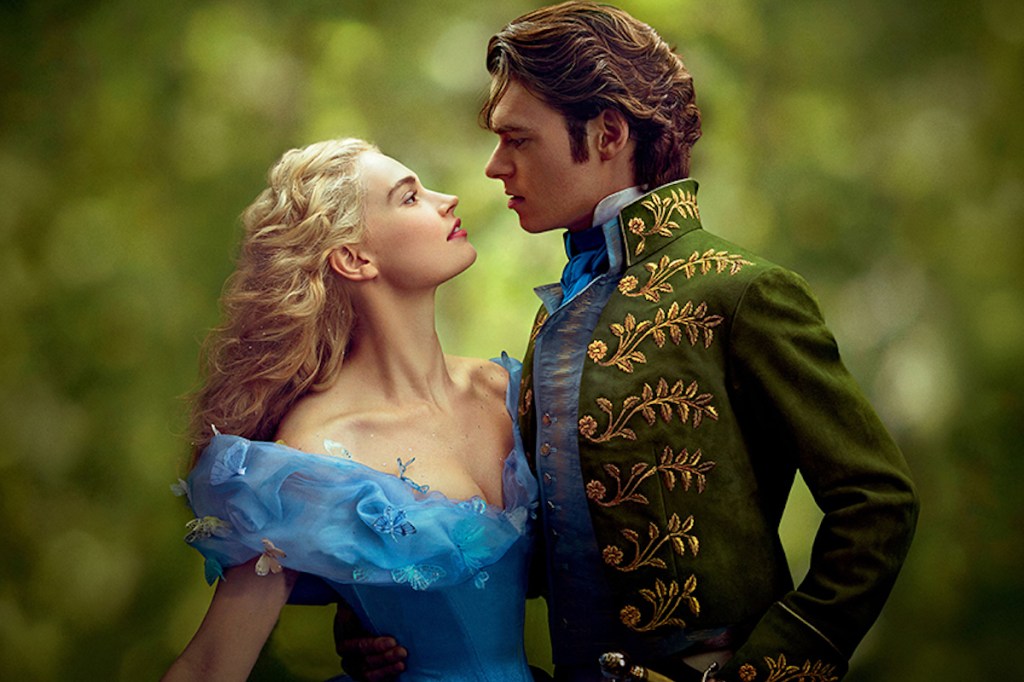
3. Cinderella (2015)
Kenneth Branagh is a filmmaker who likes to try on different hats: Shakespearean tragedies and comedies here, superhero movies like Thor and whodunits like Death on the Nile there. But when he tried his hand at a Disney fairytale with the remake of Cinderella, he just so happened to make one of the very best ones. While a definite repeat of Walt’s 1950 animated classic, Branagh updates it just enough for contemporary sensibilities to keep it fresh.
A classicalist at heart, Branagh is often on his best foot with archetypal stories, and few are as archetypal as Cinderella. Cate Blanchett’s evil stepmother is unnervingly convincing in her evil, Helena Bonham Carter’s fairy godmother is flighty fun, and Lily James and Richard Madden’s chemistry as Cinderella and her prince provide swoon-worthy chemistry. Every time the two share the screen (including in an added meet-cute), the film crackles. It doesn’t reinvent the wheel, but unlike a lot of “changes” for modern tastes, the updates here feel like sincere creative choices meant to enhance the basic appeal of the fairytale, as opposed to placating competing special interests in a boardroom. This Cinderella is a sweet, lovely, and timeless fairytale given a fine modern sheen.

2. The Jungle Book (2016)
When Jon Favreau’s “live-action” riff on The Jungle Book hit theaters, it felt like a breath of fresh air. While the formula of how empty these movies could become was already seeping into Disney’s other remakes, here was a thrilling, evocative, and intelligent update of the rather shaggy 1967 animated film. Most of the songs are gone, as iss that earlier movie’s beatnik sensibility, and in their place is a majestic fantasy about the animal kingdom in which even the vocal performances of Idris Elba as Shere Khan and Lupita Nyong’o as Raksha are ferocious. The tigers and snakes are scary, and even Bill Murray’s lackadaisical bear, Baloo, can be intimidating.
That most of this is animated inside of a computer (so not live-action other than wee Neel Sethi as Mowgli) is immaterial. The digital world that Favreau conjured isn’t trying to dazzle you with anthropomorphic charm like the animated film (or sadly Favreau’s version of Timon and Pumba); it is intended to overwhelm you with a natural, regal majesty that proves irresistible. It’s perhaps one of the only two genuinely exciting movies on this list…
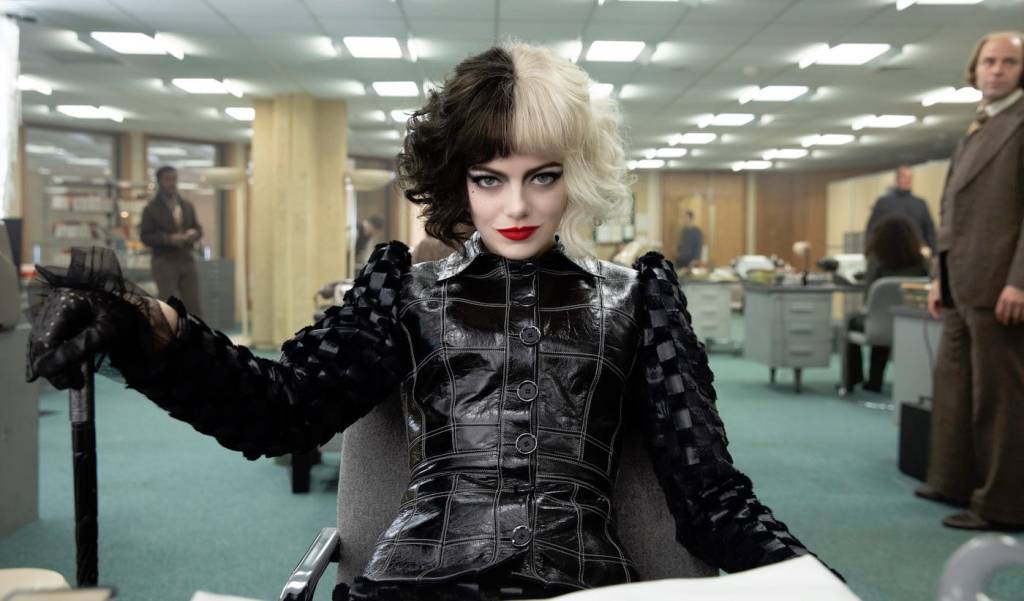
1. Cruella (2021)
Craig Gillespie’s Cruella is the movie Maleficent wanted to be: an idiosyncratic and revisionist take on a villain that turns her into an antihero… even while suggesting she remains a bit mad. The difference between success and failure is how much more divorced Cruella is from its source material, as well as perhaps the talent who felt emboldened to do their own thing with it.
Cruella De Vil is of course the infamous monster who wanted to make a fur coat from the hides of puppy Dalmatians, but as played by Emma Stone, she’s also a fashionista rebel who before she got into puppy-napping enjoyed an All About Eve rivalry with her mentor/nemesis, the Baroness (Emma Thompson in the traditional Cruella role). The story is silly, but it works because Stone absolutely devours the part, bringing a punk rock energy to a Disney diva, and she finds crucial support from a subversive and spiky script by Tony McNamara (Stone’s scribe on The Favourite). By setting its story in the 1970s, Gillespie also indulges the same kind of free-wheeling period piece anarchy he deployed in much more adult settings like I, Tonya (2017) and Pam & Tommy (2022).
The result is a cunning and even vaguely original star vehicle about vamping women behaving badly in the fashion world (an alternate title could’ve been the Battle of the Emmas). That it uses the 101 Dalmatians IP and iconography to get the kind of budget and audience which can pay for all those pop songs on the soundtrack makes it seem all the funnier. It barely counts as a remake, hence why it’s so devilishly good.
